Social foraging, where animals forage in groups, takes many forms but is less studied in marine predators as measuring social associations in the wild is challenging. We used biologging (activity, cameras and telemetry receivers) sensors to measure social associations and simultaneous behaviour, in white sharks (Carcharodon carcharias) […]
This article discusses how Brazil seeks tech innovations inspired by nature through biomimicry. Examples include taking inspiration from the movement of whale fins to innovate wind energy generation and the circulation of air inside termite mounds inspiring sustainable building designs. Brazil is looking into winged seeds in rebuilding rainforests; The main […]
Designers of legged robots are challenged with creating mechanisms that allow energy-efficient locomotion with robust and minimalistic control. Sources of high energy costs in legged robots include the rapid loading and high forces required to support the robot’s mass during stance and the rapid cycling of the […]
Abstract: Tunas of the genus Thunnus are a group of high-performance pelagic fishes with many locomotor traits that are convergently shared with other high-performance fish groups. Because of their swimming abilities, tunas continue to be an inspiration for both comparative biomechanics and the […]
Honeybee Tongue Hairs are Stiff and Hydrophobic
“The honeybee tongue, foraging liquid food in nature, has a unique segmented surface covered with dense hairs. Since honeybees are capable of using their tongue to adapt to possibly the broadest range of feeding environments to exploit every possible source of liquids, the surface properties of the tongue, especially the covering […]
Open Job Opportunity: Web Design Manager (APPLICATIONS DUE APRIL 8)
The Biomimicry Institute hosts AskNature.org, a Youth Design Challenge to support project-based education; a Biomimicry Launchpad to incubate new biomimicry ideas; the Ray of Hope Prize® to scale biomimetic companies; and a Biomimicry Global Network that connects innovators across the world.
[…]
A team of scientists has constructed a robot leg that, like its natural model, is very energy efficient. BirdBot benefits from a foot-leg coupling through a network of muscles and tendons that extends across multiple joints. In this way, BirdBot needs fewer motors than previous legged robots and could, theoretically, scale […]
This article is about Peptide Mediated interactions. It reviews the biological system as well as new discoveries that have been made. In essence, what I learned throughout this article is that proteins are very important for the cellular machinery and are participating in most functions within the […]
A new study has found a material that can mimic the sea slug’s most essential intelligence features. The discovery is a step toward building hardware that could help make AI more efficient and reliable for technology ranging from self-driving cars and surgical robots to social media algorithms.
AI has a really […]
Paper, Perception of biological motion by jumping spiders
This pattern, termed “biological motion” in the literature, can
be used as a visual cue, enabling many animals (including humans) to distinguish animate
from inanimate objects. Crucially, even artificially created scrambled stimuli, with no recognizable
structure but that maintains semirigid movement patterns, are perceived […]
Paper, The development of the electroreceptors of the platypus
A series of developmental stages of the platypus were examined to obtain an anatomical description of the development of the periphery of the electroreceptive system. Putative electroreceptors, composed of modified mucous glands, were observed to appear at 10 days post hatching (p.h.). The typical striped arrangement of peripheral electroreceptors in the platypus was seen at […]
This article talks about the caterpillar, which can curl into a wheel and roll away when in danger. They can do so at incredibly high speeds, and they contain one of the “fastest self-propelled wheeling behaviors” in nature. Implementing the caterpillar’s rolling capabilities, scientists have been able to develop more efficient […]
This article gives insight into how researchers in different countries use bio-inspired robots in order to study animal behavior in their natural environment. For example, scientists from the US created a robot (B2) inspired by bats and their flight mechanism. B2 can do fast diving maneuvers and […]
It is generally agreed that sperms ‘swim’ by beating or rotating their soft tails. However, a research team has discovered that ray sperms move by rotating both the tail and the head. The team further investigated the motion pattern and demonstrated it with a robot. Their study has expanded the knowledge […]
This paper combines experiments, simulations and analytical modeling that are inspired by the stress reductions associated with the functionally graded structures of the dentin–enamel-junctions (DEJs) in natural teeth. Unlike conventional crown structures in which ceramic crowns are bonded to the bottom layer with an adhesive layer, real teeth do not have a distinct “adhesive layer” […]
Researchers at MIT say they have developed a tiny sensor-carrying device that can be blown by the wind as it tumbles toward the ground, offering potential for wireless sensors that can monitor how temperature, humidity or other environmental conditions vary across large swaths of land, such as farms or forests.
Researchers at Max Planck Institute for Intelligent Systems have modelled an improved highly energy efficient robot leg for their Birdbot robot based on the structures of legs from ostriches, which share the same features and mechanisms as the legs of the Tyrannosaurus Rex 66 millions years ago. This structure of the […]
This competition gives the opportunity for students to come up with bioinspired/biomimicry ideas to help solve problems around the world. Over the 6 years that this competition went on, many college students from around the world competed; there was great diversity among the competitors.
Learn more (opens external site)
Columbia Engineering researchers report that they have developed a “cloaking” system that temporarily hides therapeutic bacteria from immune systems, enabling them to more effectively deliver drugs to tumors and kill cancer cells in mice. By manipulating the microbes’ DNA, they programmed gene circuits that control the bacteria surface, building a molecular […]
Paper, Balance Strategies in Hoverboard Control
This study examines how people learn to perform lower limb control in a novel task with a hoverboard requiring to maintain dynamic balance. We designed an experiment to investigate the learning of hoverboard balance and two control strategies: A hip strategy, which mainly uses hip movements to change the angle of the foot, and an […]
“Scientists from the University of California, Davis, discovered that redwood trees have two types of leaves, and those leaves have completely different jobs… Together, these functionally distinct leaves allow the world’s tallest trees to thrive in both wet and dry parts of their range in California, without […]
Researchers created a 3D-printable mask design modeled after animal noses that are more breathable. They mimicked the winding pathways that air takes in animal noses, which not only increases the surface area over which pathogens can be filtered out, but also prevents a drop in air pressure, which makes the masks […]
Paper, Projection-based 3D Bioprinting
“Projection-based 3D bioprinting can be summarized as a surface-to-entity forming method. As the printing process begins, the platform firstly goes down and submerges under the liquid material surface, leaving a thin gap between the tank bottoms. This gap, when filled with materials, has the same thickness with each digital slice. Then, […]
Visual Communication and Sketching is a course by the Jacobs Institute of Design, taught by Justin Evan Rheinfrank. This course is project-based and students learn how to understand the basics of visual design, effectively sketch, and tell compelling stories through visual design.
Learn more (opens external site)
Thanks to its feathery fluff, a dandelion seed riding the wind can cover more than half a mile. While disheartening for many gardeners, this marvel of passive travel was an inspiration for scientists at the University of Washington. The UW researchers have created tiny devices that are dispersed with the breeze, […]
Investigating the complex and highly ordered mineralized skeletal system of the knobby starfish, a team of U.S. National Science Foundation discovered an unexpected combination of characteristics that may lead to developing an entirely new class of high-performance lightweight ceramic composites.
The team examined ossicles, calcareous skeletal […]
Noncoding RNA molecules called Piwi-interacting RNA (piRNA) normally suppress gene activity in humans. Geneticists are using piRNAs in nematode worms for gene silencing to allow biomedical research and drug development to advance. They created a 21-letter RNA sequence and combined it with natural piRNA machinery and silenced certain genes. They were […]
Synthetic regulatory networks with prescribed functions are engineered by assembling a reduced set of functional elements. We could also assemble them computationally if the mathematical models of those functional elements were predictive enough in different genetic contexts. Only after achieving this will we have libraries of models of biological parts able […]
Conventional wide-field-of-view cameras consist of multi-lens optics and flat image sensor arrays, which makes them bulky and heavy. As a result, they are poorly suited to advanced mobile applications such as drones and autonomous vehicles. In nature, the eyes of aquatic animals consist […]
Bio-inspired intelligence is in the spotlight in the field of international artificial intelligence, and unmanned combat aerial vehicle (UCAV), owing to its potential to perform dangerous, repetitive tasks in remote and hazardous, is very promising for the technological leadership of the nation and essential for improving the […]
Festo, a global supplier of automation equipment, has unveiled three new lightweight robotic concepts which take inspiration from elephants, octopuses and the human arm.
Learn more (opens external site)
Inspired by the pattern of shark skin, Sharklet is the unique biomimetic technology that achieves antibacterial and antifouling activities through microtopography on surfaces of various materials.Sharklet inhibits bacterial contamination with advanced surface technology. Different from chemical disinfectants and antibacterial products, Sharklet protects users from bacterial infections. Importantly, it will not cause […]
Fire ants survive floods by forming rafts made up of thousands of wriggling insects. A new study by engineers at CU Boulder lays out the simple physics-based rules that govern how these ant rafts morph over time: shrinking, expanding or growing long protrusions like an elephant’s trunk. Fire ants form these […]
Researchers create mathematical model to analyze wheel spiders. The wheel spider data is used to bioinspire locomotion in robots through simulation.
Learn more (opens external site)
Research, The University of Chicago Marine Biological Discovery
The Marine Biological Laboratory is a world-renowned scientific institution, and scientists and students come to the MBL throughout the year to pursue research and education in diverse areas of fundamental biological discovery.
The Division of Research encompasses all research programs at the Laboratory, including the development and management of research services, research budgets, the assignment […]
A synthetic strategy to incorporate catechol functional groups into benzoxazine thermoset monomers was developed, leading to a family of bioinspired small-molecule resins and main-chain polybenzoxazines derived from biologically available phenols. Lap-shear adhesive testing revealed a polybenzoxazine derivative with greater than 5 times improved shear strength on aluminum substrates compared to a […]
For our connection this week we did research on the single proteins and how they prompt mature brain cells to regenerate multiple cell types. In this article we see how a single protein can reverse the developmental clock for an entire adult brain and their cells known as their astrocytes cells. […]
This upperdivision course begins with an open-ended question (“What is design?”) and asks students to think critically about the central tenets, commonalities, and limits of design in an ever-changing complex world. A historical and theoretical overview of predominant schools of thought across all scales of design (i.e. industrialization, modernism, post-modernism, and beyond) will ground the […]
The Messersmith Lab at UC Berkeley is a bioinspired materials science and bioengineering lab. They study “structure-processing-property relationships of materials in biological systems,” and use this information to inform the design, synthesis, and application of biologically inspired synthetic materials. Some of their current projects include molecular mechanochemical […]
“Physicists, chemists, and immunologists at McMaster University have teamed up to modify red blood cells to transport viral agents which can safely trigger the immune system to protect the body against SARS-CoV-2, creating a promising new vehicle for vaccine delivery.” – McMaster University. “Researchers re-engineer red blood cells to trigger immune system against COVID-19.” ScienceDaily. […]
Learn about our two Decals!
 Click here to find out more about our Fall Bioinspired Design Decal and our Spring Bioinspired Design in Action Decal – ALL MAJORS are welcome.
Click here to find out more about our Fall Bioinspired Design Decal and our Spring Bioinspired Design in Action Decal – ALL MAJORS are welcome.Berkeley BioDesign Community
 Click here to learn about the BioD: Bio-Inspired Design @ Berkeley student organization or here to signup for more info.
Click here to learn about the BioD: Bio-Inspired Design @ Berkeley student organization or here to signup for more info.Search
Student Login

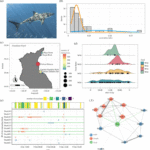
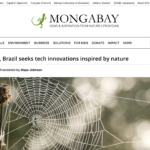
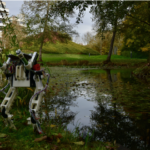
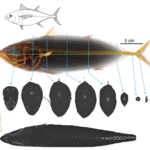

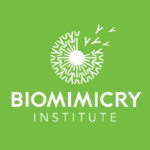


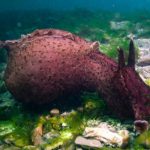
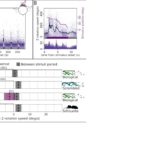

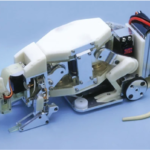

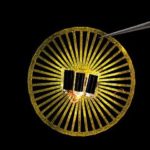
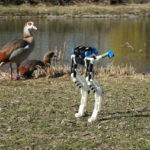


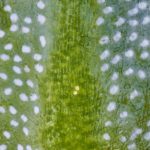

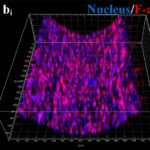

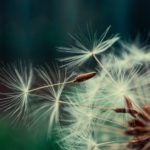


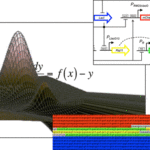

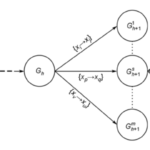

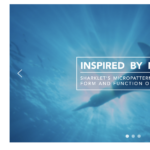

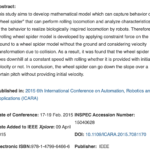
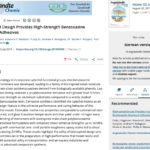



I imagine that the neurological circuits underlying these processes are governed by both 2d spacing maps with their brains as…
to reduce the impact of car accidents, it may be possible to study the force diverting physics of cockroaches to…
you see this type of head-bobbing stability in many avian creatures related to pigeons like chickens. the head ability to…
not like they taught horses how to run! this is an example of convergent evolution where both sea creatures and…
The brain functions in a similar way with neuronal connections. our brains are able to utilize the multiplicity of connections…